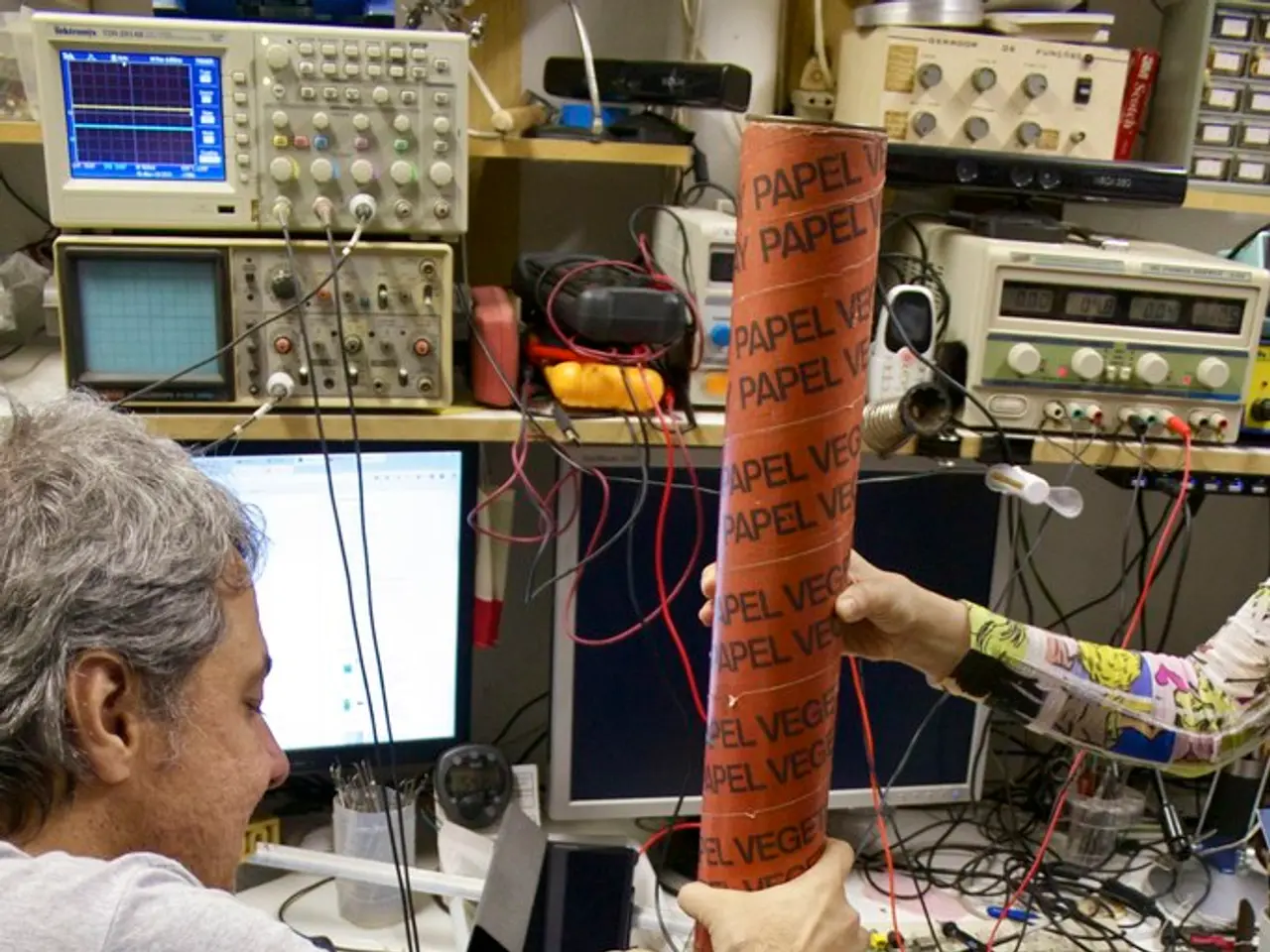Roblox and its Augmented Reality potential: Shaping the next era of interactive play?
Art Meets Technology: The Rise of Augmented Reality in Cultural Institutions
Augmented Reality (AR) technology is revolutionising the way we experience art, as cultural institutions embrace the digital realm to create immersive and educational experiences.
One such example is the collaboration between Verizon and the Metropolitan Museum of Art, which resulted in the creation of the unique AR experience called The Met Unframed. This partnership, a prime example of the art world partnering with technology companies, offers visitors a new dimension to the traditional museum visit. The Met Unframed features over a dozen digitally rendered galleries and nearly 50 works of art from across the Met's vast collection.
But AR technology's impact goes beyond traditional museum visits. The Replica app, launched by the Metropolitan Museum of Art in partnership with Roblox, allows users to bring their favourite art pieces to life and incorporate them into their virtual world. Users can scan famous works from the Metropolitan Museum of Art and turn them into digital wearables for their Roblox avatars.
The Replica app also offers educational initiatives that help visitors learn about the art in the museum. In addition, users can access in-app maps of the museum and collect unique art-inspired accessories for their avatars.
Roblox, a popular gaming platform, has expanded into AR with the launch of the Replica app. Beyond wearable art and interactive experiences, Roblox's AR technology is expected to expand into broader applications such as virtual collaboration, AI-driven personalization, educational tools, and strategic brand partnerships.
Enhanced virtual collaboration and social interaction could evolve AR platforms like Roblox into virtual workspaces, mirroring the reported 300% increase in virtual collaboration platform usage industry-wide. Integration with Artificial Intelligence (AI) is also on the horizon, suggesting future AR experiences will be highly personalized and interactive.
Roblox could extend to the education and training sectors, where immersive AR can provide virtual tutorials, safety simulations, and interactive learning environments. Strategic advertising partnerships with major brands for in-game collaborations are unlocking new revenue streams for Roblox, indicating broader adoption of AR experiences as marketing platforms.
Cross-industry integration and blockchain are also anticipated, with the growing adoption of blockchain technology to manage digital ownership and security in virtual environments. Roblox may integrate such technologies to allow safer asset trading and ownership within AR spaces, enhancing the economic ecosystem for creators and users.
In summary, Roblox’s AR technology trajectory includes evolving from primarily entertainment-focused wearable art and interactive experiences towards a comprehensive ecosystem blending AI, virtual collaboration, educational applications, immersive marketing, blockchain-backed asset management, and cross-sector digital transformation. The future of AR in cultural institutions looks bright, with museums and galleries continuing to explore and embrace the digital realm to engage audiences in new and exciting ways.
Gadgets like AR-enabled smartphones and tablets are essential for accessing technology-driven experiences in education-and-self-development, such as the immersive and interactive art lessons offered by the Replica app. As more cultural institutions implement AR technology, learning about art and history becomes increasingly engaging and accessible. By incorporating AR technology into cultural institutions, a new era of self-guided, interactive, and personalized learning is emerging.




